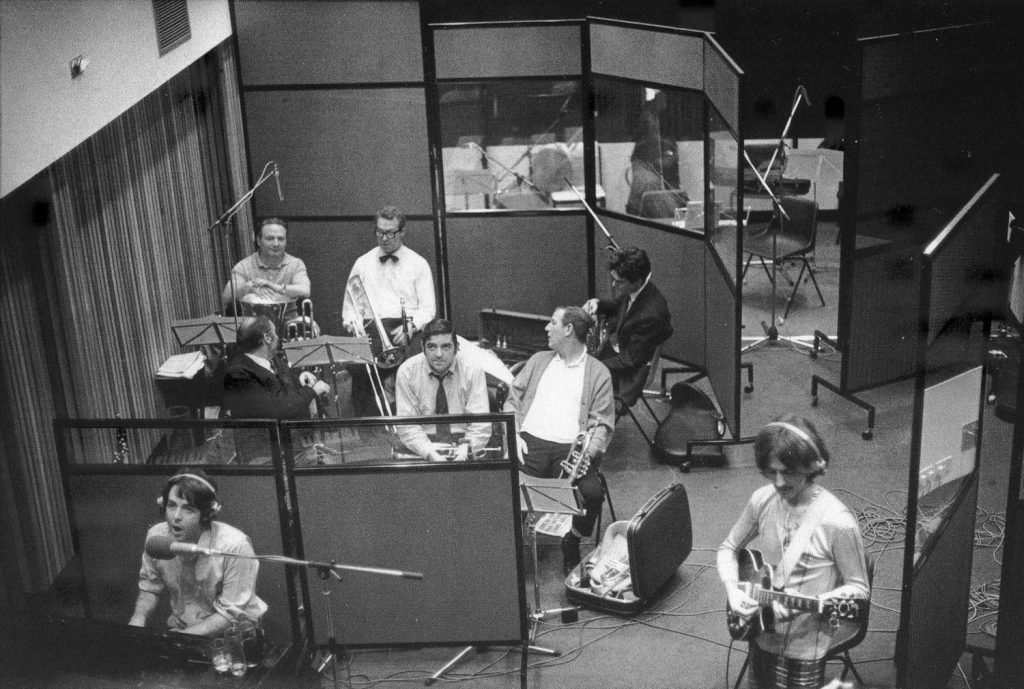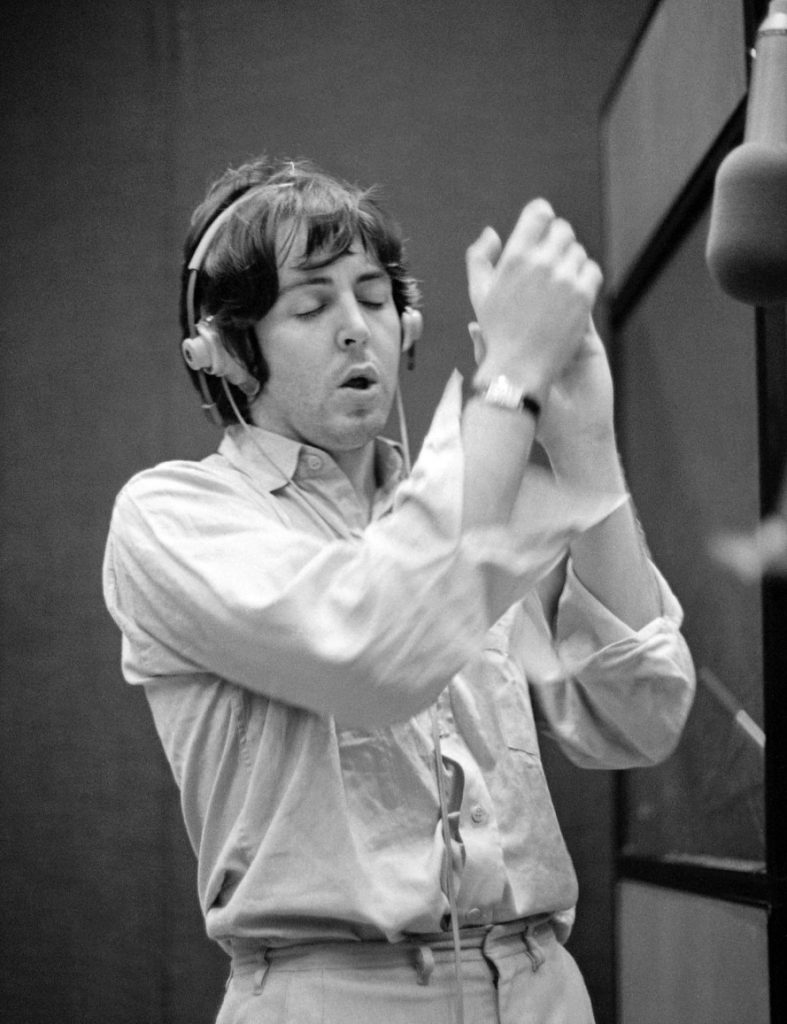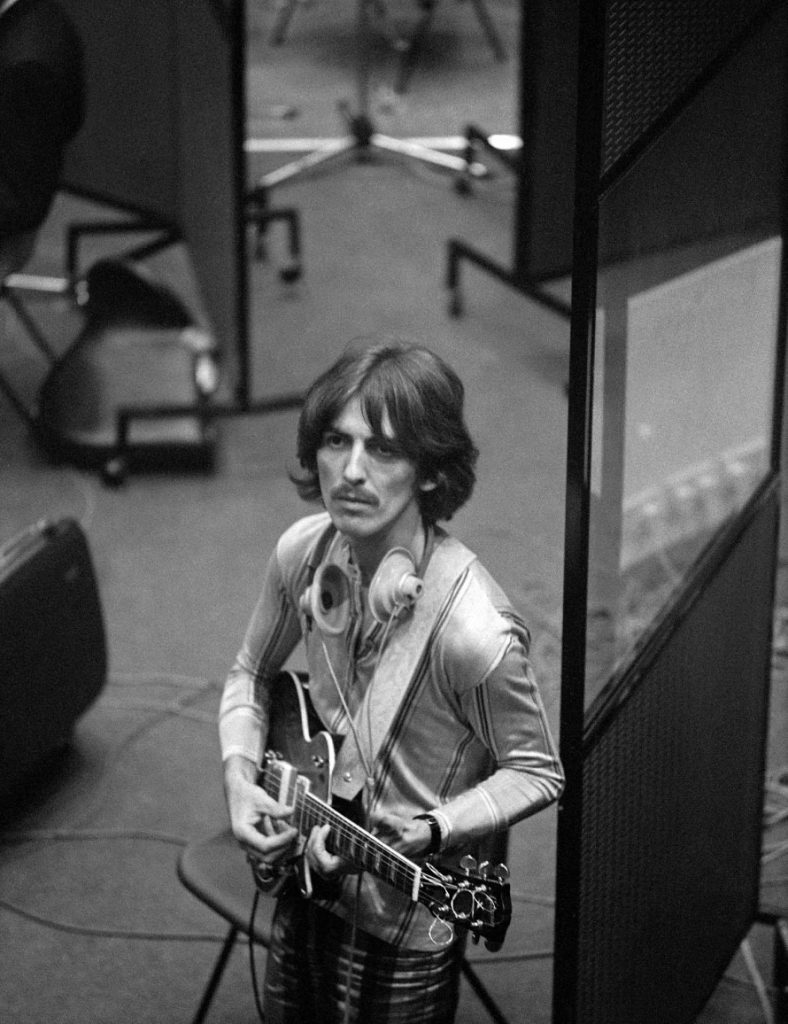Friday, October 4, 1968
Recording "Martha My Dear", "Honey Pie"
For The Beatles
Last updated on September 19, 2021
Friday, October 4, 1968
For The Beatles
Last updated on September 19, 2021
"The Beatles" (aka the White Album) sessions
May 30 - Oct 18, 1968 • Songs recorded during this session appear on The Beatles (Mono)
Recording studio: Trident Studios, London, UK
Session Oct 02, 1968 • Recording "Honey Pie"
Session Oct 03, 1968 • Recording "Savoy Truffle"
Session Oct 04, 1968 • Recording "Martha My Dear", "Honey Pie"
Session Oct 07, 1968 • Mixing "While My Guitar Gently Weeps", recording "Long Long Long"
Some of the songs worked on during this session were first released on the "The Beatles (Mono)" LP.
The Beatles spent this entire week of recording at Trident Studios. On October 1 and October 2, they worked on Paul McCartney’s “Honey Pie“. On October 3, they worked on George Harrison’s “Savoy Truffle“. And on this day, October 4, they worked on Paul McCartney’s “Martha My Dear” and resumed work on “Honey Pie“.
The session lasted from 4 pm to 4:30 am. They started working on the basic track of “Martha My Dear“, with Paul McCartney on piano and lead vocals, George Harrison on electric guitar and Ringo Starr on drums. John Lennon was absent from this session. By 6 pm, a basic track – named Take 1 – was recorded.
Solo vocal by Paul but his voice is double-tracked. That means you hear him twice over although the blending of his two vocal “takes” has been done so well it’s almost like hearing just one voice. NOT dedicated to Paul’s Good Dog Martha! A lovely ballad with rich orchestral backing. Theme is You Were Meant For Me. Incidentally Ringo bashed a hole in his brand new bass drum skin the night we started this track.
Mal Evans – From the Beatles Monthly Book, N°64, November 1968
From 6 pm to 9 pm, The Beatles were joined by seven studio musicians to record the brass and woodwind arrangement for “Honey Pie” that George Martin had prepared.
At 9 pm, those musicians left and were replaced by fourteen other session musicians for the recording of a brass and strings arrangement for “Martha My Dear“. This was quite unusual for The Beatles to record the basic track of a song and invite external musicians to complement it during the same session (and this suggests George Martin was given a demo of some sort prior to this session to write the score recorded on this day)!
From midnight to 4:30 am, Paul McCartney re-recorded his lead vocal track for “Martha My Dear” and added handclaps. He then double-tracked both the vocals and the handclaps.
Finally, he returned to “Honey Pie” to record the line “now she’s hit the big time!“. As mentioned in “The Beatles” Super Deluxe edition book (2018):
“Now she’s hit the big time” was distorted as a ’78 vocal’ on track seven. It was an aural reference to the scratchy sound of discs played at the speed of 78 revolutions per minute from the era that “Honey Pie” evoked.
We put a sound on my voice to make it sound like a scratchy old record. So it’s not a parody, it’s a nod to the vaudeville tradition that I was raised on.
Paul McCartney – from “Many Years From Now” by Barry Miles
Work on “Martha My Dear” and “Honey Pie” continued on the next day.




Recording • Take 1
Recording • SI onto take 1
Recording • SI onto take 1
The Complete Beatles Recording Sessions • Mark Lewisohn
The definitive guide for every Beatles recording sessions from 1962 to 1970.
We owe a lot to Mark Lewisohn for the creation of those session pages, but you really have to buy this book to get all the details - the number of takes for each song, who contributed what, a description of the context and how each session went, various photographies... And an introductory interview with Paul McCartney!
The Beatles Recording Reference Manual: Volume 4: The Beatles through Yellow Submarine (1968 - early 1969)
The fourth book of this critically acclaimed series, "The Beatles Recording Reference Manual: Volume 4: The Beatles through Yellow Submarine (1968 - early 1969)" captures The Beatles as they take the lessons of Sgt. Pepper forward with an ambitious double-album that is equally innovative and progressive. From the first take to the final remix, discover the making of the greatest recordings of all time. Through extensive, fully-documented research, these books fill an important gap left by all other Beatles books published to date and provide a unique view into the recordings of the world's most successful pop music act.
If we modestly consider the Paul McCartney Project to be the premier online resource for all things Paul McCartney, it is undeniable that The Beatles Bible stands as the definitive online site dedicated to the Beatles. While there is some overlap in content between the two sites, they differ significantly in their approach.

Notice any inaccuracies on this page? Have additional insights or ideas for new content? Or just want to share your thoughts? We value your feedback! Please use the form below to get in touch with us.